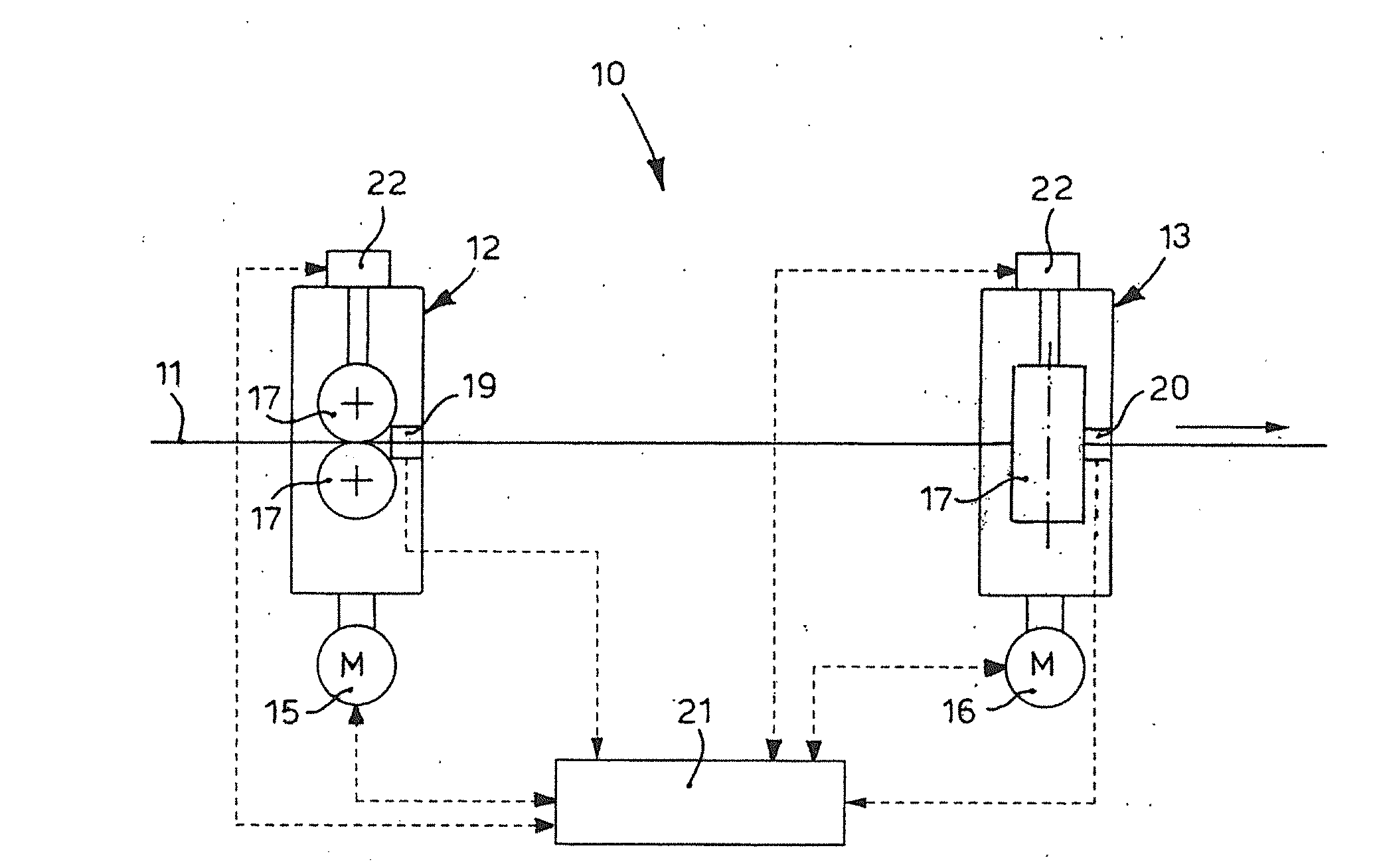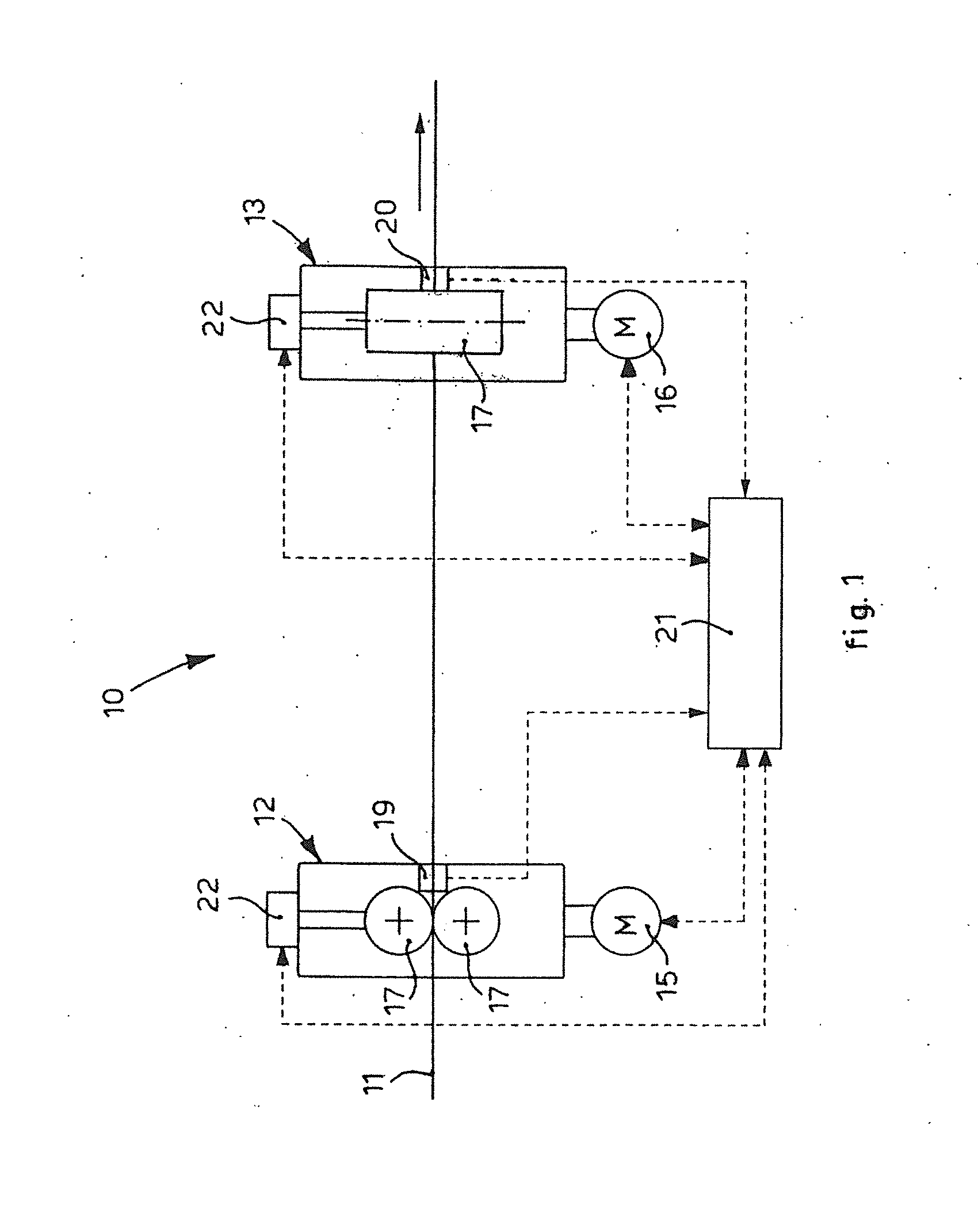Method and device to control the section sizes of a rolled product
a technology of a rolled product and a control device, which is applied in the direction of rolling mill control devices, metal rolling, manufacturing tools, etc., can solve the problems of inability to correct, affecting uneven segments of material disposed between two successive stands, and inacceptable decrease in the quality of rolled products
- Summary
- Abstract
- Description
- Claims
- Application Information
AI Technical Summary
Benefits of technology
Problems solved by technology
Method used
Image
Examples
Embodiment Construction
[0053]A segment 10 (FIG. 1) of a rolling line according to the present invention comprises a first rolling stand 12 and a second rolling stand 13, disposed downstream of the first stand 12, for rolling a rolled product 11.
[0054]The segment of line 10 can also comprise further conventional rolling stands, or combinations of conventional stands and fast rolling blocks.
[0055]Both the first stand 12 and the second stand 13 are driven by their own electric motors 15 and 16, which make the respective rolling rolls 17 rotate and which are each provided with speed adjusters.
[0056]A first detector 19 to detect the section of the rolled product 11 is disposed downstream of the first stand 12, while a second detector 20 to detect the section of the rolled product 11 is located downstream of the second stand 13.
[0057]The first and second section detectors 19, 20 can be of any known type, for example the magnetic type (induced currents), optical or other type, and both are connected to a control...
PUM
| Property | Measurement | Unit |
|---|---|---|
| sizes | aaaaa | aaaaa |
| size | aaaaa | aaaaa |
| electric quantity | aaaaa | aaaaa |
Abstract
Description
Claims
Application Information
 Login to view more
Login to view more - R&D Engineer
- R&D Manager
- IP Professional
- Industry Leading Data Capabilities
- Powerful AI technology
- Patent DNA Extraction
Browse by: Latest US Patents, China's latest patents, Technical Efficacy Thesaurus, Application Domain, Technology Topic.
© 2024 PatSnap. All rights reserved.Legal|Privacy policy|Modern Slavery Act Transparency Statement|Sitemap


